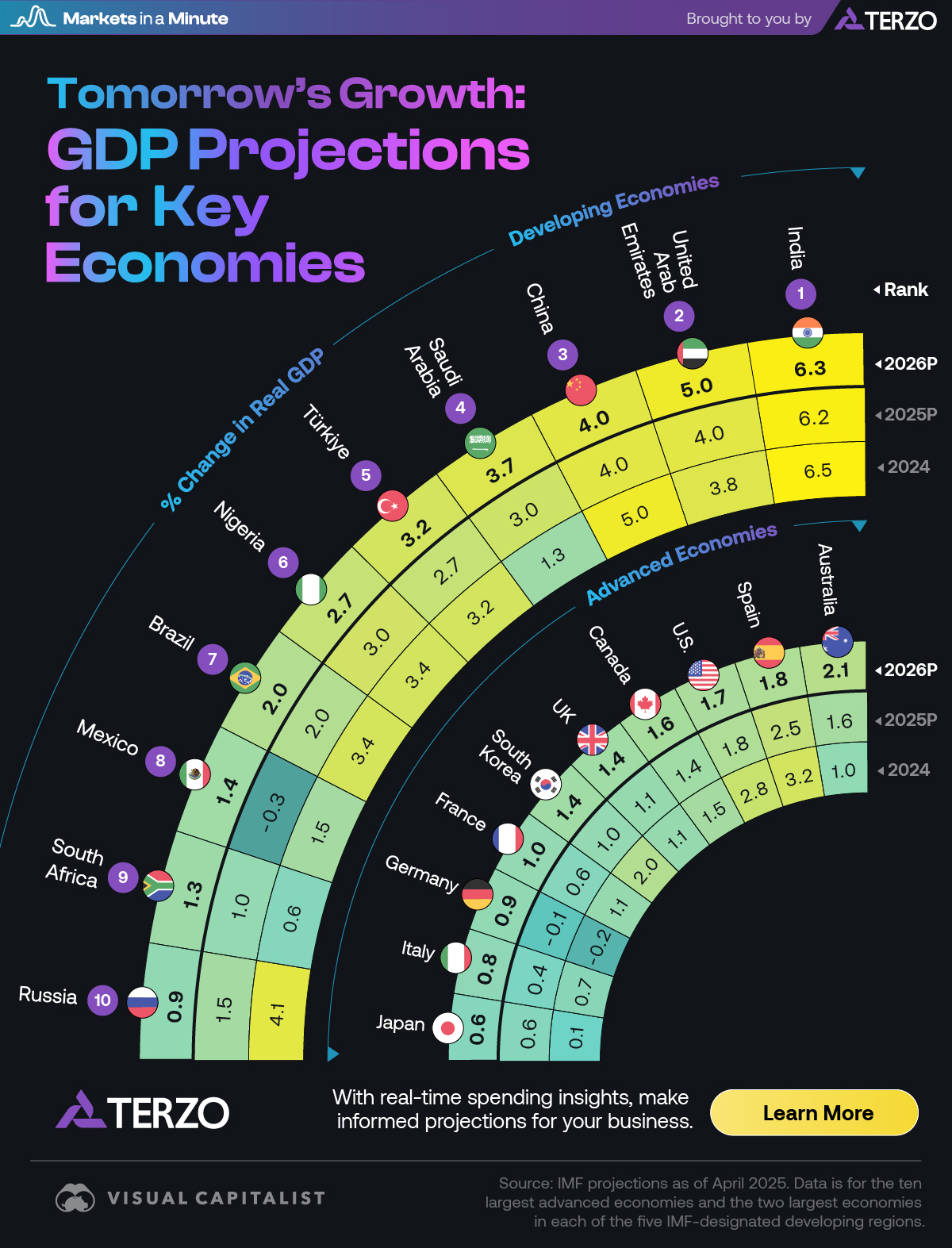The Critical Role of Reliable Data in Achieving Sustainable Development Goals
The integrity of national statistics is a cornerstone for monitoring and achieving the 2030 Agenda for Sustainable Development. Recent concerns over the potential politicization of government economic data in the United States draw parallels to long-standing issues in China, highlighting a global challenge to the data-driven framework of the Sustainable Development Goals (SDGs). The reliability of official data directly impacts governance, economic policy, and investment decisions crucial for sustainable progress.
Institutional Integrity and Economic Governance (SDG 16 & SDG 8)
The trustworthiness of national institutions is fundamental to sustainable development, particularly concerning the generation of economic statistics that guide policy and investment.
The Challenge to Strong Institutions (SDG 16)
The perception of political interference in national statistics bureaus, whether in the U.S. or China, directly contravenes SDG 16, which calls for effective, accountable, and transparent institutions. When official figures, such as GDP growth rates, are widely disbelieved, it signals a weakness in institutional integrity and erodes public trust. This lack of transparency hinders the ability of all stakeholders to hold institutions accountable and make informed decisions.
Impact on Sustainable Economic Growth (SDG 8)
Unreliable data presents a significant obstacle to achieving SDG 8, which promotes sustained, inclusive, and sustainable economic growth and decent work for all. The consequences include:
- Flawed Policy Formulation: Governments cannot design effective policies to foster economic growth or address unemployment without accurate labor and output statistics.
- Inefficient Capital Allocation: Businesses and investors rely on economic data to identify opportunities and manage risks. As noted by the American Enterprise Institute, poor data leads to “bad decisions,” resulting in malinvestment that undermines economic stability and sustainable industrialization.
- Inability to Measure Progress: The core objective of tracking progress towards SDG targets is compromised, making it impossible to assess whether economic growth is inclusive or sustainable.
Alternative Data Methodologies for Monitoring Development (SDG 9 & SDG 17)
In environments where official data is unreliable, analysts and investors turn to alternative data sources and multi-stakeholder partnerships to gauge economic reality. These methods provide proxies for tracking progress related to several SDGs.
Proxies for Economic and Industrial Activity (SDG 9)
To circumvent questionable official statistics, China watchers and market analysts utilize various proxy indicators that reflect on-the-ground activity. These methods are essential for assessing progress toward SDG 9 (Industry, Innovation, and Infrastructure).
- Infrastructure Usage Data: Metrics such as freight volumes and truck movements serve as direct indicators of commercial and industrial activity, reflecting the use of critical infrastructure.
- Energy Consumption: Data on electricity use is a strong proxy for industrial production and overall economic vitality.
- Satellite Imagery Analysis: Remote sensing data, including nighttime light intensity and heat emissions from industrial zones, provides objective, large-scale evidence of economic activity and urbanization patterns relevant to SDG 9 and SDG 11 (Sustainable Cities).
- Private Sector Research: Independent market research firms conduct their own consumer and business surveys to gather more reliable data for investment decisions, such as opening new retail locations.
The Role of Multi-Stakeholder Partnerships (SDG 17)
The reliance on third-party data from research institutions, international organizations like the Council on Foreign Relations, and private marketing firms exemplifies SDG 17 (Partnerships for the Goals). These collaborations are vital for filling the data gaps left by untrustworthy official sources, contributing to a more accurate and holistic understanding of economic conditions necessary for achieving all SDGs.
Conclusion: Data Integrity as a Prerequisite for the 2030 Agenda
While markets like China’s have adapted to a persistent lack of reliable official data, a shift from trusted to untrusted statistics represents a systemic shock with profound implications for sustainable development. The foundation of the SDG framework rests on the availability of high-quality, timely, and reliable data. Undermining this foundation threatens not only economic stability but also the collective ability to build a sustainable, prosperous, and equitable future for all.
Analysis of Sustainable Development Goals in the Article
1. Which SDGs are addressed or connected to the issues highlighted in the article?
-
SDG 8: Decent Work and Economic Growth
The article’s central theme is the measurement of economic activity, specifically Gross Domestic Product (GDP) and jobs reports. It discusses how unreliable economic data affects business decisions and, consequently, economic growth. The mention of China’s GDP growth rate (“over 5% last quarter”) and the overall “dramatically” grown economy directly links to this goal.
-
SDG 16: Peace, Justice and Strong Institutions
This goal is highly relevant as the article questions the integrity and transparency of national institutions. The discussion revolves around the trustworthiness of government bodies like China’s National Bureau of Statistics and the potential for political interference in the U.S. Bureau of Labor Statistics. This points directly to the need for “effective, accountable and transparent institutions.”
-
SDG 17: Partnerships for the Goals
This SDG includes targets specifically related to data, monitoring, and accountability. The article’s focus on the lack of “high-quality, timely and reliable data” and the use of alternative measures to complement GDP aligns perfectly with the data-centric targets of SDG 17, which call for supporting statistical capacity and developing better measurements of progress.
2. What specific targets under those SDGs can be identified based on the article’s content?
-
Target 16.6: Develop effective, accountable and transparent institutions at all levels.
The article directly addresses this target by highlighting a lack of trust in national statistical institutions. The statement that “nobody really believes China’s National Bureau of Statistics” and the concern that “politics might infect more than just the jobs report” in the U.S. underscore the challenge of maintaining effective, accountable, and transparent institutions free from political influence.
-
Target 17.18: …increase significantly the availability of high-quality, timely and reliable data…
The entire article is a case study on the consequences of not meeting this target. The core problem discussed is the lack of reliable official statistics, forcing investors and businesses to seek alternative data. The concern that the U.S. might be moving into “an era where official statistics are unreliable” speaks directly to the importance of this target.
-
Target 17.19: …develop measurements of progress on sustainable development that complement gross domestic product…
The article provides concrete examples of this target in action. Due to the unreliability of China’s official GDP figures, “China watchers” and investors use other measurements to gauge economic activity. These proxies, such as “freight volumes,” “electricity use,” and “nighttime light or heat emissions from satellite imagery,” are real-world examples of measurements that complement GDP.
-
Target 8.1: Sustain per capita economic growth…
While the article questions the accuracy of the figures, it explicitly mentions the key metric for this target: Gross Domestic Product (GDP). The reference to China’s GDP growing “over 5% last quarter” shows that the discussion is framed around the conventional measurement of economic growth that this target seeks to sustain.
3. Are there any indicators mentioned or implied in the article that can be used to measure progress towards the identified targets?
-
Indicator: Gross Domestic Product (GDP) growth rate
This is explicitly mentioned as the primary official statistic that is distrusted (“nobody really believes China’s National Bureau of Statistics when it says Chinese GDP grew over 5% last quarter”). It is the conventional indicator for Target 8.1.
-
Indicator: Existence of and public trust in national statistical organizations
This is a qualitative indicator for Target 16.6. The article implies this indicator by focusing on the widespread distrust of China’s National Bureau of Statistics and the fear of eroding trust in the U.S. Bureau of Labor Statistics. The level of trust is a direct measure of an institution’s perceived effectiveness and transparency.
-
Indicator: Alternative/complementary measures to GDP
The article explicitly lists several data points used as proxies for economic activity, which serve as indicators for Target 17.19. These include:
- Freight volumes (“trucks are moving around”)
- Electricity use
- Nighttime light or heat emissions from satellite imagery
- Private market research and consumer surveys
4. Summary Table of Findings
| SDGs | Targets | Indicators |
|---|---|---|
| SDG 8: Decent Work and Economic Growth | Target 8.1: Sustain per capita economic growth… | Gross Domestic Product (GDP) growth rate |
| SDG 16: Peace, Justice and Strong Institutions | Target 16.6: Develop effective, accountable and transparent institutions at all levels. | Public trust in national statistical organizations (e.g., Bureau of Labor Statistics, National Bureau of Statistics) |
| SDG 17: Partnerships for the Goals | Target 17.18: …increase significantly the availability of high-quality, timely and reliable data… | Availability of reliable official statistics (e.g., jobs reports, GDP data) |
| Target 17.19: …develop measurements of progress… that complement gross domestic product… |
|
Source: marketplace.org






